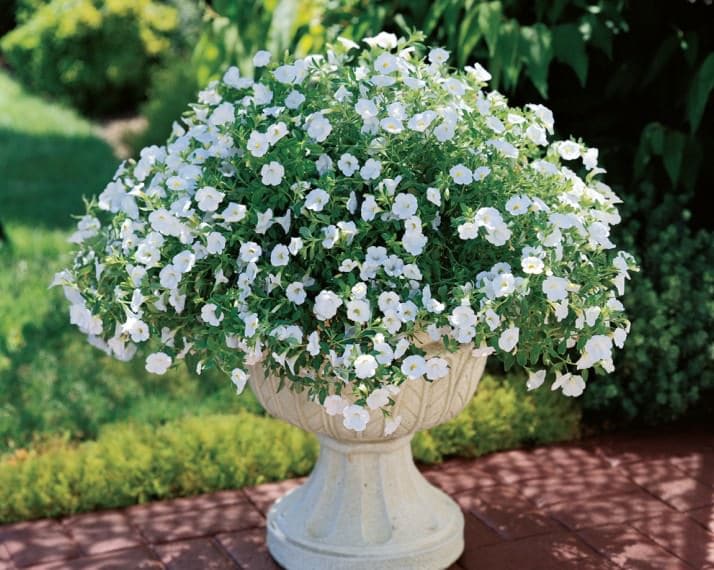Learn how to grow calibrachoa. Calibrachoa care and growing is easy, it doesn’t require special attention and blooms prolifically.
Calibrachoa, also known as “Million Bells” is much like a miniature petunia. It is more durable to changing weather conditions and diseases. Calibrachoa has a compact growing habit and small flowers. Read on to learn how to grow calibrachoa!
USDA Hardiness Zones— 9 – 11
Other Names— Trailing petunia, Mini petunia, Million Bells
What is Calibrachoa?
Calibrachoa looks well in borders and containers. Hanging baskets are a good choice for growing million bells because the plant sends flowers on a trail, making an attractive display as calibrachoa flowers come in a variety of colors and patterns.
It can grow up to 8 inches tall. The plant produces blooms all summer long and in fall in moderate climates until the first frost. Whereas in tropics, it blooms in winter and spring.
How to Grow Calibrachoa
Propagation
It can be easily propagated from seeds or cuttings. To propagate it from cuttings take several 4-8 inch long cuttings without blooms. Plant them in a pot after removing the bottom leaves in a well drained potting mix.
Keep the cuttings at a temperature around 70 F, away from direct sunlight and keep the soil moderately moist. After cuttings have outgrown the existing pots, plant them in bigger pots or on the ground.
Location
For prolific blooms, growing calibrachoa in full sun is required as they bloom less in shade. Although some varieties can grow in part shade too.
Requirements for Growing Calibrachoa
Soil
Soil for growing calibrachoa must be loose, well-drained, rich and permeable. They prefer fast-draining potting soil.
Watering
Water million bells when the first 2 inches of soil seems barely moist or dry. It is best to water less as overwatering causes root rot. Water slowly and deeply, soaking the soil to the depth of roots. Keep the leaves dry to avoid fungal diseases.
Also Read: Container Garden Watering
Fertilizer
Fertilize regularly, every other week using fertilizer specific for flowering annual plants. Also, mix slow-release balanced fertilizer in soil when planting.
Calibrachoa Care
Calibrachoa care is similar to petunia. It doesn’t require special attention and blooms prolifically.
Pinching
Pinch young plant to promote bushier growth. Also, prune long and leggy branches to encourage healthy branches and divert the plant’s energy into the right direction.
Mulching
Apply a layer of mulch all over the surface to prevent the growth of weeds and to retain moisture. This will also protect the plant from temperature fluctuations in winter.
Deadheading
Remove faded flowers to foster the emergence of new blooms. This will also prevent the deterioration of the plant.
Pests and Diseases
Avoid overwatering, it stresses the plant, restrict its growth, and promotes root rot. Calibrachoa is less sensitive to pests than petunias but might be attacked by whiteflies, aphids, and slugs.




I grew lemon slice in zone 7 last year and it bloomed even after several light frost.
I Just wonted to know where are the seeds on this plant.
I have 3 pots with calibrochoa. 2 of them started blooming in late February and continue to do so The third is making prolific leaves but no blooms. Not sure what to do with that one.